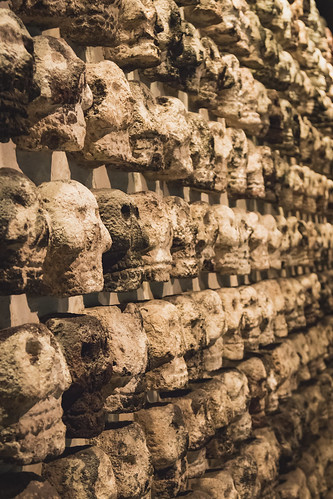Thickening associated with groundglass opacity might be seen some days later in an acute episode of haemorrhage (Figure ). Diagnosis In presence of an appropriate clinical context and compatible radiological findings, the ANCA positivity must be thought of very suggestive of Wegener. The evidence of necrotizing granulomatous vasculitides in the affected internet sites (lung, kidney, skin etc.) allows the histological confirmation in the disease.Figure. A yearold female with histologically proven granulomatosis with polyangiitis (Wegener’s) obtained from rel biopsy. Axial highresolution CT images show bilateral groundglass opacities using a predomintly perihilar distribution and also a relative sparing from the subpleural parenchyma. of birpublications.orgbjrBr J Radiol;:BJRFeragalli et alFigure. A yearold female with granulomatosis with polyangiitis (Wegener’s). Axial highresolution CT pictures show reticular pattern on a background of groundglass attenuation, representing haemorrhagic alveolitis.Surgical openlung biopsy could be the gold regular approach for the definitive diagnosis whilst transbronchial biopsy generally does not give diagnostic material. EOSINOPHILIC GRANULOMATOSIS WITH POLYANGIITIS (CHURG TRAUSS) Also known as allergic granulomatous angiitis, eosinophilic granulomatosis with polyangiitis (Churg trauss) is characterized by a clinical triad: asthma, hypereosinophilia and necrotizing systemic vasculitis. The diagnosis is according to the presence of four or a lot more of the following six findings: asthma eosinophilia SC66 chemical information inside a differential white blood cell count, mononeuropathy or polyneuropathy because of a systemic vasculitis, parasal sinus abnormalities, migratory or transient pulmory opacities and histological evidence of extravascular eosinophils PubMed ID:http://jpet.aspetjournals.org/content/184/1/56 inside a biopsy specimen. Late age of onset (imply age of years) of asthma makes it possible for us to distinguish EGPA (Churg trauss) asthma from typical asthma within the common population. The lung would be the most normally involved organ, followed by the skin. DAH (haemorrhagic alveolitis)  and glomerulonephritis are much more or less widespread than inside the other forms of vasculitides. The heart is an significant target organ in EGPA (ChurgStrauss), plus the key causes of morbidity and mortality are represented by corory arteritis. Histological findings JWH-133 site contain granulomatous necrotizing vasculitis from the little arteries and eosinophilrich inflammatory infiltrate.Clinically, EGPA (Churg trauss) shows three distinct phases: (a) the prodromal period, which could persist for several years, consisting of asthma and allergic rhinitis; (b) a phase of marked peripheral blood eosinophilia and eosinophil tissue infiltrates; (c) along with a lifethreatening vasculitic phase. The first two prevasculitic phases are characterized by marked tissue eosinophilia, which manifests within the lung as eosinophilic pneumonia. Radiological findings The most frequently observed radiological sign in individuals with EGPA (Churg trauss) consists of transient and frequently migrant opacities with bilateral and nonsegmental distribution, mostly peripheral, without predilection for any craniocaudal lung zone. This aspect is equivalent to eosinophilic pneumonia and organizing pneumonia The most prevalent abnormality at HRCT, observed in up to of patients, is bilateral places of groundglass opacity or consolidation having a bilateral symmetric distribution along with a peripheral predomince. Other comparatively prevalent findings would be the presence of airway involvement consisting of bronchial dilatation, bronchial wall thicke.Thickening associated with groundglass opacity might be seen some days later in an acute episode of haemorrhage (Figure ). Diagnosis In presence of an proper clinical context and compatible radiological findings, the ANCA positivity must be regarded very suggestive of Wegener. The proof of necrotizing granulomatous vasculitides within the affected web sites (lung, kidney, skin and so forth.) enables the histological confirmation from the illness.Figure. A yearold female with histologically verified granulomatosis with polyangiitis (Wegener’s) obtained from rel biopsy. Axial highresolution CT pictures show bilateral groundglass opacities having a predomintly perihilar distribution in addition to a relative sparing on the subpleural parenchyma. of birpublications.orgbjrBr J Radiol;:BJRFeragalli et alFigure. A yearold female with granulomatosis with polyangiitis (Wegener’s). Axial highresolution CT images show reticular pattern on a background of groundglass attenuation, representing haemorrhagic alveolitis.Surgical openlung biopsy could be the gold common method for the definitive diagnosis though transbronchial biopsy generally doesn’t present diagnostic material. EOSINOPHILIC GRANULOMATOSIS WITH POLYANGIITIS (CHURG TRAUSS) Also called allergic granulomatous angiitis, eosinophilic granulomatosis with polyangiitis (Churg trauss) is characterized by a clinical triad: asthma, hypereosinophilia and necrotizing systemic vasculitis. The diagnosis is depending on the presence of 4 or a lot more of the following six findings: asthma eosinophilia inside a differential white blood cell count, mononeuropathy or polyneuropathy due to a systemic vasculitis, parasal sinus abnormalities, migratory or transient pulmory opacities and histological evidence of extravascular eosinophils PubMed ID:http://jpet.aspetjournals.org/content/184/1/56 inside a biopsy specimen. Late age of onset (mean age of years) of asthma permits us to distinguish EGPA (Churg trauss) asthma from typical asthma within the basic population. The lung could be the most frequently involved organ, followed by the skin. DAH (haemorrhagic alveolitis) and glomerulonephritis are far more or significantly less prevalent than in the other types of vasculitides. The heart is an essential target organ in EGPA (ChurgStrauss), and the principal causes of morbidity and mortality are represented by corory arteritis. Histological findings contain granulomatous necrotizing vasculitis with the small arteries and eosinophilrich inflammatory infiltrate.Clinically, EGPA (Churg trauss) shows three distinct phases: (a) the prodromal period, which could persist for many years, consisting of asthma and allergic rhinitis; (b) a phase of marked peripheral blood eosinophilia and eosinophil tissue infiltrates; (c) as well as a lifethreatening vasculitic phase. The first two prevasculitic phases are characterized by marked tissue eosinophilia, which manifests in the lung as eosinophilic pneumonia. Radiological findings One of the most frequently observed radiological sign in individuals with EGPA (Churg trauss)
and glomerulonephritis are much more or less widespread than inside the other forms of vasculitides. The heart is an significant target organ in EGPA (ChurgStrauss), plus the key causes of morbidity and mortality are represented by corory arteritis. Histological findings JWH-133 site contain granulomatous necrotizing vasculitis from the little arteries and eosinophilrich inflammatory infiltrate.Clinically, EGPA (Churg trauss) shows three distinct phases: (a) the prodromal period, which could persist for several years, consisting of asthma and allergic rhinitis; (b) a phase of marked peripheral blood eosinophilia and eosinophil tissue infiltrates; (c) along with a lifethreatening vasculitic phase. The first two prevasculitic phases are characterized by marked tissue eosinophilia, which manifests within the lung as eosinophilic pneumonia. Radiological findings The most frequently observed radiological sign in individuals with EGPA (Churg trauss) consists of transient and frequently migrant opacities with bilateral and nonsegmental distribution, mostly peripheral, without predilection for any craniocaudal lung zone. This aspect is equivalent to eosinophilic pneumonia and organizing pneumonia The most prevalent abnormality at HRCT, observed in up to of patients, is bilateral places of groundglass opacity or consolidation having a bilateral symmetric distribution along with a peripheral predomince. Other comparatively prevalent findings would be the presence of airway involvement consisting of bronchial dilatation, bronchial wall thicke.Thickening associated with groundglass opacity might be seen some days later in an acute episode of haemorrhage (Figure ). Diagnosis In presence of an proper clinical context and compatible radiological findings, the ANCA positivity must be regarded very suggestive of Wegener. The proof of necrotizing granulomatous vasculitides within the affected web sites (lung, kidney, skin and so forth.) enables the histological confirmation from the illness.Figure. A yearold female with histologically verified granulomatosis with polyangiitis (Wegener’s) obtained from rel biopsy. Axial highresolution CT pictures show bilateral groundglass opacities having a predomintly perihilar distribution in addition to a relative sparing on the subpleural parenchyma. of birpublications.orgbjrBr J Radiol;:BJRFeragalli et alFigure. A yearold female with granulomatosis with polyangiitis (Wegener’s). Axial highresolution CT images show reticular pattern on a background of groundglass attenuation, representing haemorrhagic alveolitis.Surgical openlung biopsy could be the gold common method for the definitive diagnosis though transbronchial biopsy generally doesn’t present diagnostic material. EOSINOPHILIC GRANULOMATOSIS WITH POLYANGIITIS (CHURG TRAUSS) Also called allergic granulomatous angiitis, eosinophilic granulomatosis with polyangiitis (Churg trauss) is characterized by a clinical triad: asthma, hypereosinophilia and necrotizing systemic vasculitis. The diagnosis is depending on the presence of 4 or a lot more of the following six findings: asthma eosinophilia inside a differential white blood cell count, mononeuropathy or polyneuropathy due to a systemic vasculitis, parasal sinus abnormalities, migratory or transient pulmory opacities and histological evidence of extravascular eosinophils PubMed ID:http://jpet.aspetjournals.org/content/184/1/56 inside a biopsy specimen. Late age of onset (mean age of years) of asthma permits us to distinguish EGPA (Churg trauss) asthma from typical asthma within the basic population. The lung could be the most frequently involved organ, followed by the skin. DAH (haemorrhagic alveolitis) and glomerulonephritis are far more or significantly less prevalent than in the other types of vasculitides. The heart is an essential target organ in EGPA (ChurgStrauss), and the principal causes of morbidity and mortality are represented by corory arteritis. Histological findings contain granulomatous necrotizing vasculitis with the small arteries and eosinophilrich inflammatory infiltrate.Clinically, EGPA (Churg trauss) shows three distinct phases: (a) the prodromal period, which could persist for many years, consisting of asthma and allergic rhinitis; (b) a phase of marked peripheral blood eosinophilia and eosinophil tissue infiltrates; (c) as well as a lifethreatening vasculitic phase. The first two prevasculitic phases are characterized by marked tissue eosinophilia, which manifests in the lung as eosinophilic pneumonia. Radiological findings One of the most frequently observed radiological sign in individuals with EGPA (Churg trauss)  consists of transient and frequently migrant opacities with bilateral and nonsegmental distribution, mostly peripheral, devoid of predilection for any craniocaudal lung zone. This aspect is related to eosinophilic pneumonia and organizing pneumonia By far the most popular abnormality at HRCT, observed in as much as of individuals, is bilateral places of groundglass opacity or consolidation with a bilateral symmetric distribution plus a peripheral predomince. Other comparatively prevalent findings will be the presence of airway involvement consisting of bronchial dilatation, bronchial wall thicke.
consists of transient and frequently migrant opacities with bilateral and nonsegmental distribution, mostly peripheral, devoid of predilection for any craniocaudal lung zone. This aspect is related to eosinophilic pneumonia and organizing pneumonia By far the most popular abnormality at HRCT, observed in as much as of individuals, is bilateral places of groundglass opacity or consolidation with a bilateral symmetric distribution plus a peripheral predomince. Other comparatively prevalent findings will be the presence of airway involvement consisting of bronchial dilatation, bronchial wall thicke.